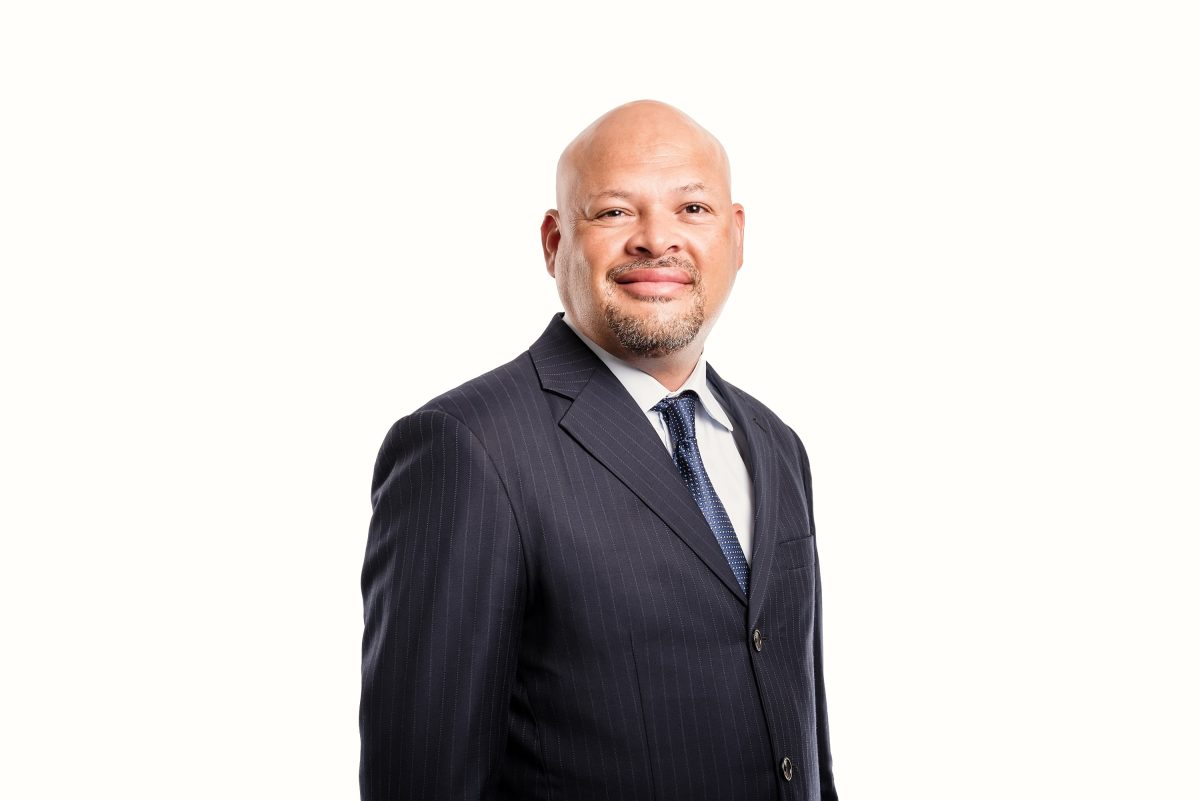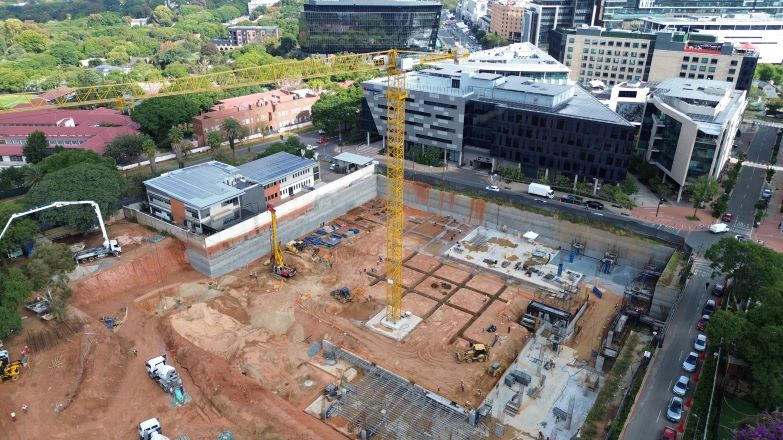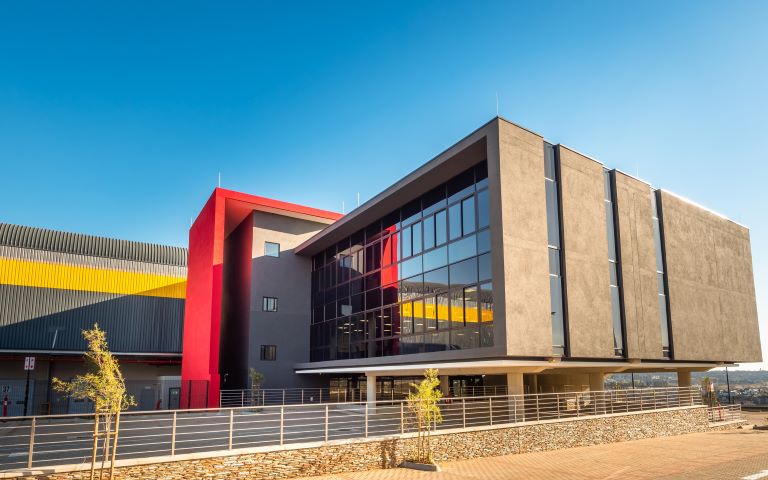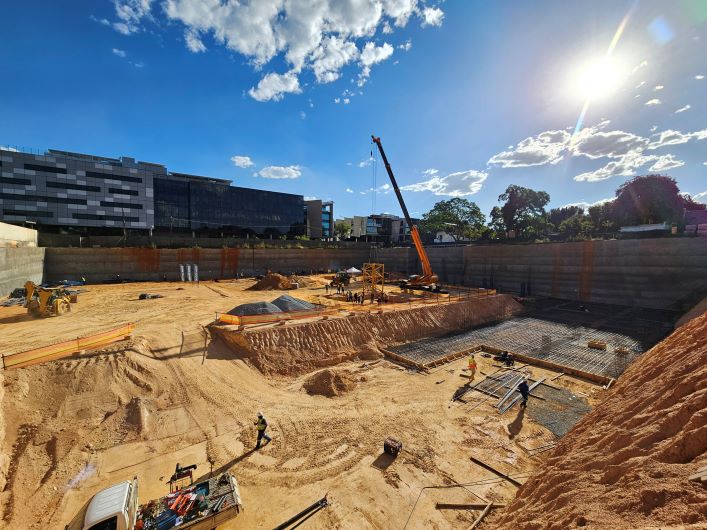

At the heart of government’s economic problems is a bloated public service
, costing about 35% of total government spending and limiting the funds available for vital infrastructure development and maintenance, according to Dr Azar Jammine, director and chief economist at consultancy Econometrix.
Speaking at an AfriSam event recently, Dr Jammine said it was unfortunate that government was continuing to over-spend in order to maintain the public service at its current size, instead of spending some of that money on building infrastructure. He had hoped to see some sign in the recent budget that the government wage bill could be reduced, in favour of promoting economic growth – but this was not the case.
“If there is going to be an improvement in the business conditions of the civil engineering and building sectors over the next couple of years, this will be mainly a result of the overall economic cycle now turning for the better,” he said.
Richard Tomes, sales and marketing executive at AfriSam, said the economic outlook described by Dr Jammine did not bode well for the cement sector, which had been dealing with over-supply conditions for many years.
Jammine noted that civil engineering had “bled far more” than the overall economy in recent years, and the picture was not much better in the building sector. “Non-residential building has also taken a hammering, and in recent times residential building also started weakening somewhat,” he said.
Plans passed in the non-residential building sector showed a turn towards the positive, but residential remained slow – including little signs of life in mortgage advances on residential buildings. “It will take a while for real house price growth to become really positive,” said Jammine. “At the moment it is about 0% so presents no incentive for investment into residential buildings.”
House price inflation needed to rise faster before any improvements in demand for products like cement and concrete could be expected. Producer price inflation in building and construction was tight at just 2,5%, lower than the average for the overall economy.
The result was that the construction sector would feel little immediate relief, and that business in this and related sectors – like cement and concrete manufacturers – should not expect “too much too soon”. While it was true that the new political leadership had opened the way for a more positive economic trajectory, he warned that more concerted economic restructuring was still required for a sustainable recovery.
He pointed to structural issues such as the poor position of state-owned enterprises, which have essentially “run out of cash” and are therefore not committing the volumes of revenue to infrastructure that would improve the outlook for the civil engineering sector. Another indication of the poor state of state-owned enterprises, he said, was that their liabilities – as a proportion of their assets – had risen in the latest budget from 69,5% to 71,5%.
“That is why I am saying: temper your enthusiasm,” he said. “At least the economic situation seems to be stabilising, but it will take quite a while for any recovery to start coming through.”
On a more positive note, he pointed to sharp declines in long term interest rates that will mean lower interest repayments on government debt, allowing for revenue to be channelled to other areas of spending. Fixed capital investment is also likely to accelerate.
“Businesses have been sitting on billions of rands in their balance sheets and maybe now, with President Ramaphosa in place, more of that will start coming through,” he said. “All I am warning about is not to expect the results to be immediately obvious in the next few months; more likely they will be seen in 2019.”
He noted that state procurement lies at the heart of many of the blockages in infrastructure; “hopefully with the current attack on state capture, we will make progress towards better procurement practices.”
So dire is the current situation with state procurement that the Consulting Engineers South Africa (CESA) believes there should be a national directorate in Treasury to monitor infrastructure spending – which CESA argues would encourage the proper spending levels to be implemented.
Jammine said that the number of skilled people leaving the civil engineering sector would also hold back its recovery, as there will be a shortage of skills by the time the necessary infrastructure development started taking place.
“While the pipeline of qualified engineers is starting to improve, we need experienced experts to provide proper mentorship and allow effective skills transfer to take place,” he urged.Rent-seeking practices at many municipalities would have to be corrected, but it was not just corruption that was causing problems in infrastructure delivery at municipal level.
“Many municipalities don’t spend their budgets – the money is there but they don’t have the wherewithal to spend it,” he said. “Two-thirds of municipalities have spent less than 85% of their allocated budgets over the past year. Only 10% are spending all the funds allocated to them.”
Tomes emphasised Dr Jammine’s point that fixed capital formation needed to be about 25% of gross domestic product if it is to really promote a sustainable growth path; it is currently closer to 15%.
“The last time South Africa managed to approach this target was around 2007 and 2008, when the country was investing heavily in infrastructure ahead of the 2010 FIFA Soccer World Cup,” said Tomes. “This short period of growth however came crashing down very fast when the global financial crisis set in. Although we have seen global markets recover since then, South Africa has unfortunately not kept pace with growth in the global economy.”
The cement shortage before 2010 led some players to introduce new production capacity, quickly causing a surplus. He pointed to the close correlation between GDP growth and cement demand; with South Africa’s expected growth of between 1,5% and 2,5%, the country will still have surplus capacity for many years to come.
“That is why AfriSam is of the view that there are too many players and too much capacity in the local cement industry, and why there is a need for consolidation to improve efficiencies,” he said. “Even though the country’s growth forecast has been raised to a possible 1,9% for 2018, it was not likely that cement demand would rise suddenly – either in South Africa or the rest of the continent.”
With Eskom’s electricity tariffs likely to rise faster after the 2019 elections – probably back into the double-digits, energy costs in the cement sector will remain a big cost driver.“The cement sector cannot afford to have inefficient capacity, so we need to make sure that the industry focuses on using its most efficient capacity,” said Tomes.
“We don’t share the optimism of some other players regarding the future of our sector on the rest of the African continent; based on what we’ve seen in this market and the GDP projections for African countries, we don’t think that we’re going to see a massive improvement in cement demand in the short to medium term.”While he acknowledged that the opportunities around the continent were certainly there, they were some way off.
“Taking a long-term view, Africa is certainly the place to be if you’re in the cement game; we’ve seen population growth projections and high rates of urbanisation which all auger well for our industry, but I don’t think we can afford to wait until 2030,” he said. “There is a pressing issue right now to start to consolidate and fix our situation – so that we can gear ourselves for this growth, when it comes.”
“Investors would rather see us improving our efficiencies, managing our costs and de-gearing our balance sheet. This could be achieved through better procurement logistics as well as other synergies and driving down selling, general and administrative (SG&A) costs. Having a strong home base is the ideal platform from which to grow and take advantage of the opportunities in some of the more high risk markets on the African continent. We have seen with many of the larger players such as Dangote in Nigeria and LafargeHolcim in Europe, a strong home base does create a buffer against some of the strong headwinds in other riskier parts of the world – the same is true for us here in South Africa”, he said.
Tomes concluded by highlighting evidence that successful, global cement producers that have grown over time, are those that consolidated their home base, creating strong balance sheets from which to venture into more risky areas further afield.
More news
- Big 5 Construct Kenya returns to Nairobi in November connecting 150 exhibitors with over 8...
- Webinar Highlights Decarbonising Strategies for Transport and Logistics Sector in Africa
- World Cement Association will be holding its Annual Conference on 24th – 25th October 20...
- Leading African companies and individuals named as finalists of the Big 5 Southern Africa ...
- Ministerial Forum a top feature at Big 5 Construct Ethiopia, alongside 20 CPD-certified In...





